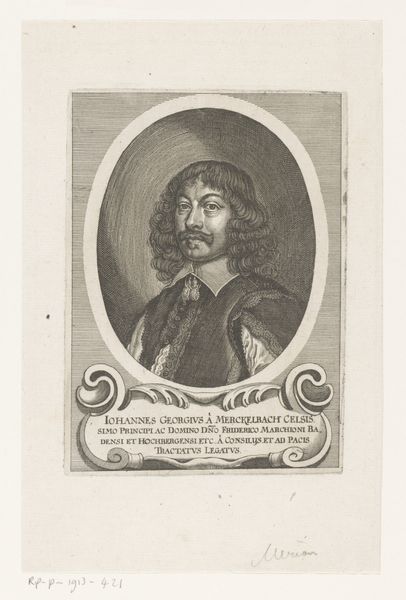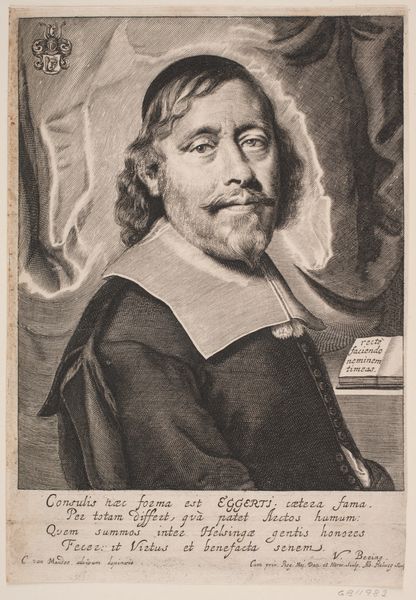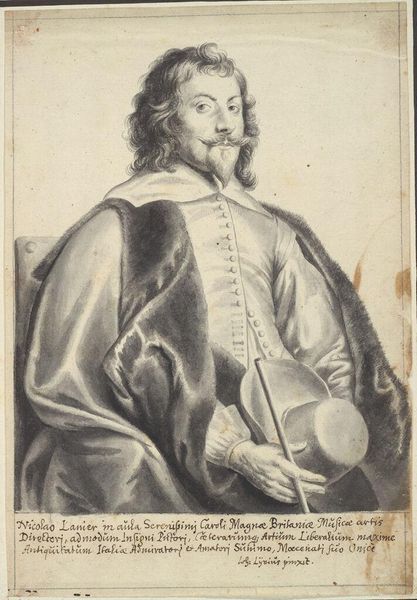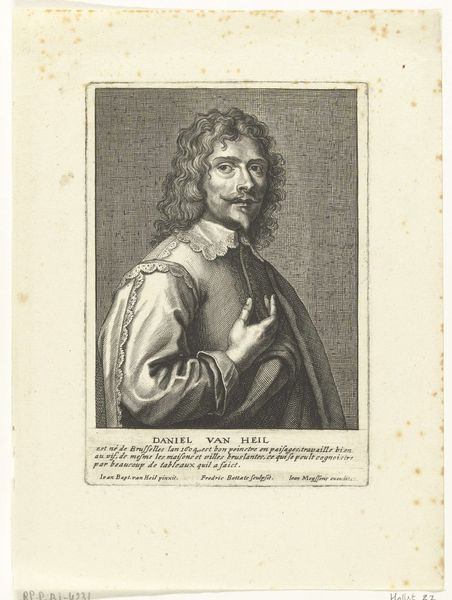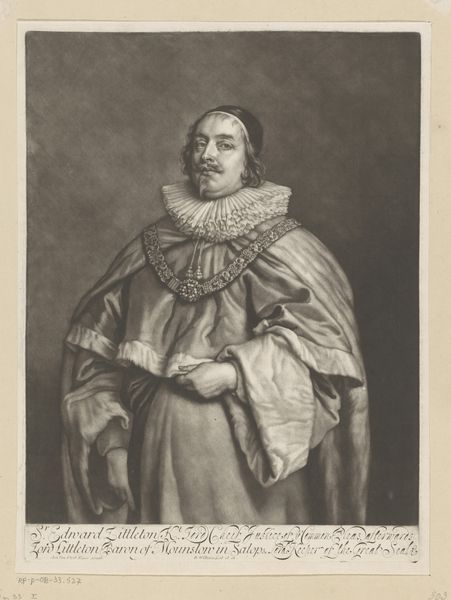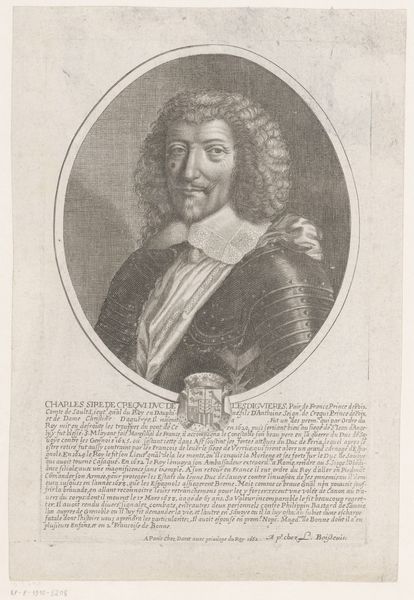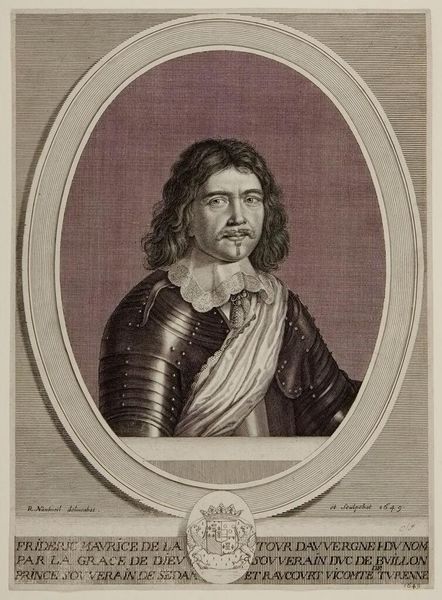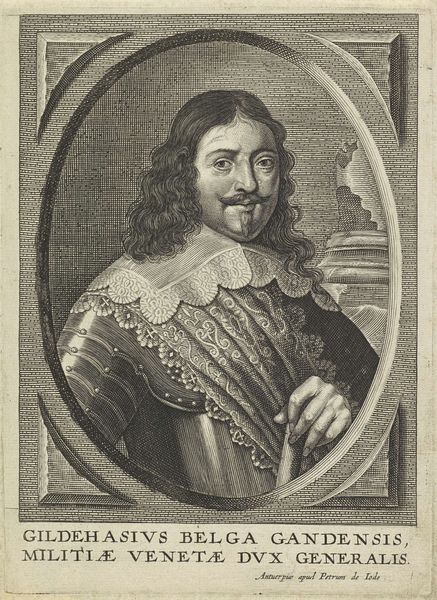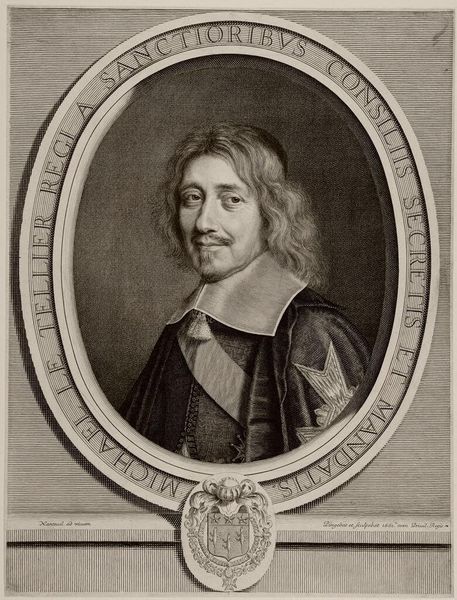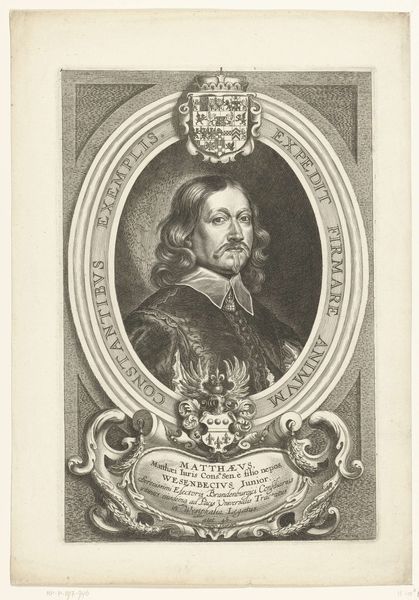
engraving
#
portrait
#
baroque
#
old engraving style
#
history-painting
#
engraving
Dimensions: height 260 mm, width 196 mm
Copyright: Rijks Museum: Open Domain
Reinier van Persijn created this print of Ludovico Ariosto sometime in the 17th century. It's made using engraving, a process rooted in skilled labor and precise execution. Engraving involves meticulously cutting lines into a metal plate, which then holds ink to transfer the image onto paper. The depth and density of these lines create the tonal variations we see in the print, from the fine details of Ariosto's face to the textures of his garments. The material of the metal plate, likely copper, allows for incredible detail, but also demands patience and expertise. Each line is a physical mark of the engraver's hand, reflecting hours of labor and a mastery of technique passed down through generations. This print not only captures Ariosto's likeness, but also embodies the social context of its creation, where skilled craftsmanship and artistic production were intertwined with economic structures and systems of patronage. It reminds us that even in the realm of fine art, materials, making, and context are crucial to understanding its full meaning.
Comments
No comments
Be the first to comment and join the conversation on the ultimate creative platform.


